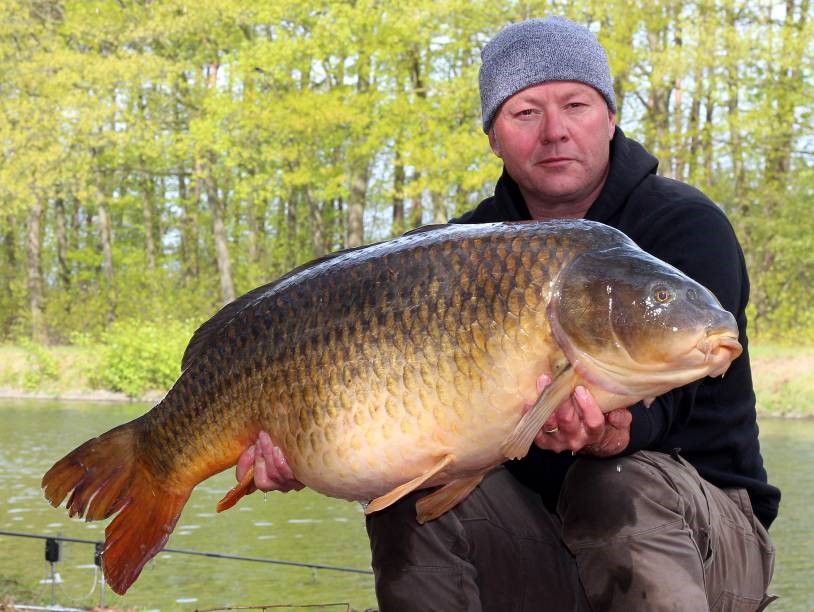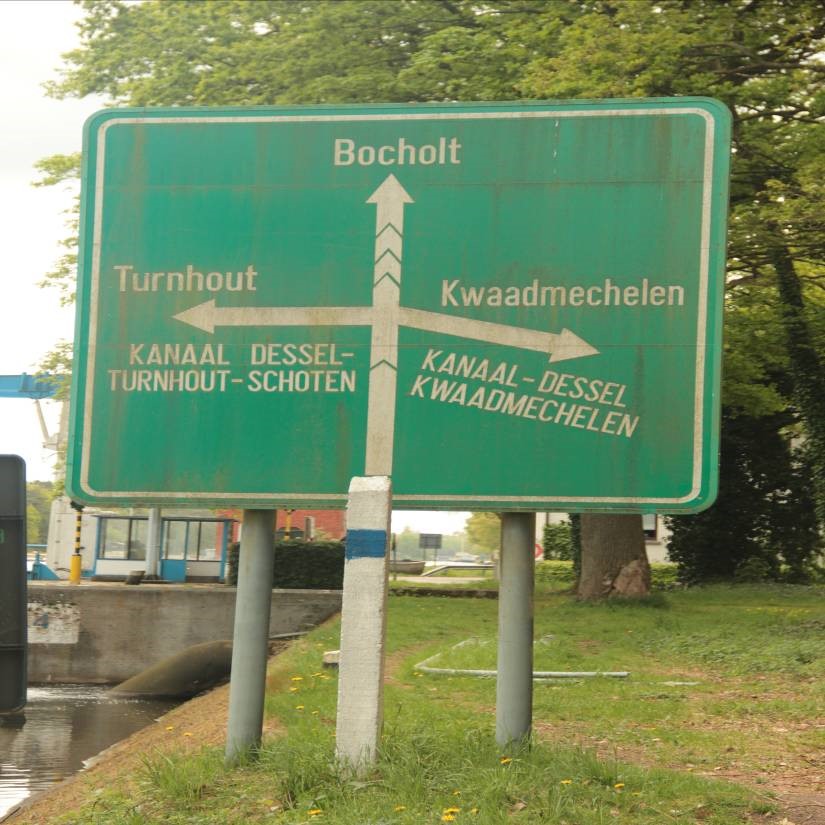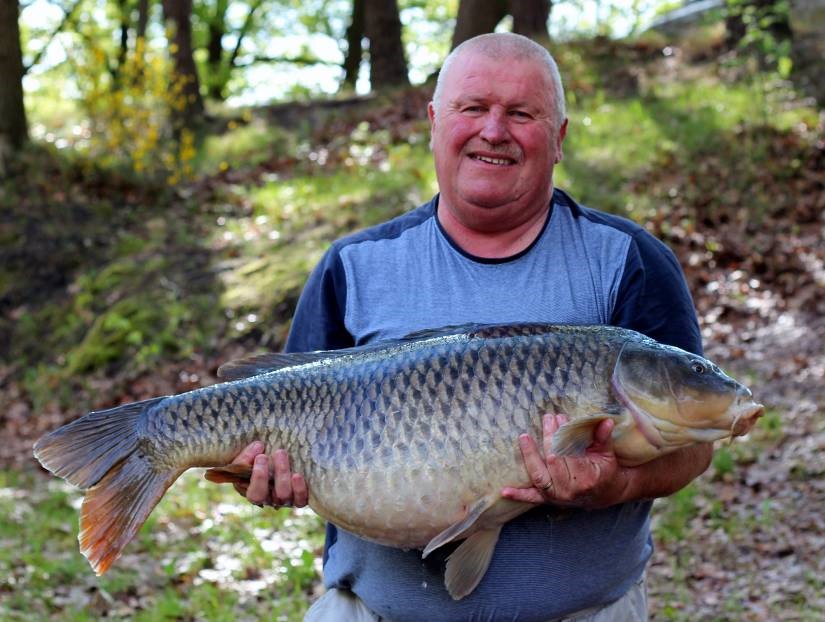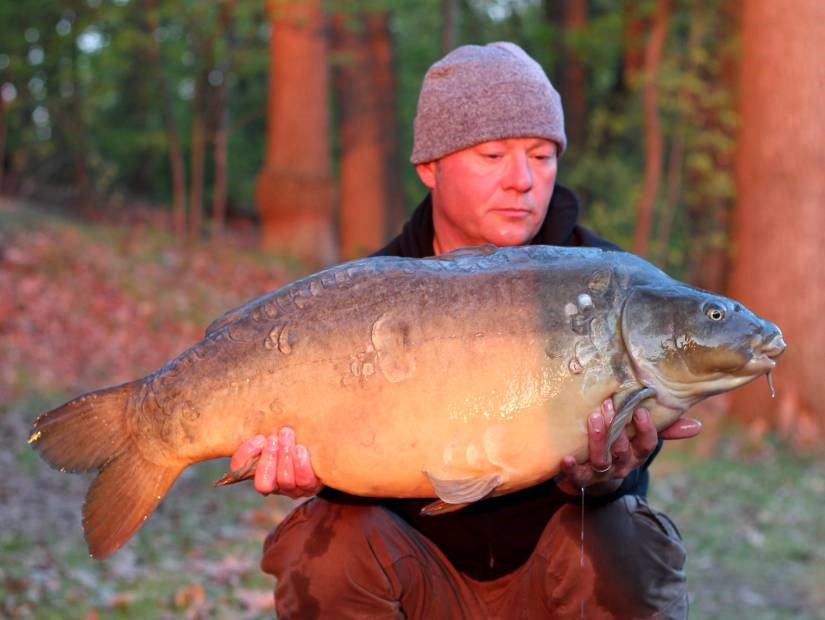Fishing the canals of
Belgian canals are similar to
their Dutch counterparts, usually less densely stocked but often contain carp
of higher average sizes. Though as big fish venues
Fishing canals can be
frustrating, they can be the moodiest places to get a bite, and with so much
water and few carp, location is everything. Unlike lakes where you can often
look out on many acres from a well-chosen swim, on a canal keeping an eye on
the area you're fishing and maybe a couple of hundred metres on either side is
about the best you can manage. Add to the puzzle; a 2-rod limit, restricted
vehicle access, few features, and carp which show only rarely, you begin to
appreciate that catching with any consistency can be a challenge.
Occasionally, you get lucky;
a big fish comes out of the blue or you stumble upon feeding carp and put
together a decent hit, then all the blanks are forgotten and you feel a sense
of achievement. I've been fishing in Belgium for almost 20 years now and can
honestly say that the relatively small number of big carp I've landed from the
harder Belgian canals, when set against the days and weeks I've fished for
them, would barely warrant a mention amongst the annual haul of huge carp
Europe throws up these days, but each carp I have landed from these difficult
waters, is up there amongst my most treasured captures and that's what matters
to me.
So why do it? A 50lb carp is
a 50lb carp wherever it’s from, isn't it? If you think that, then
There've been many times when
returning from a particularly difficult trip, that we've sat on the ferry,
supping pints of medication, wondering why we don't just book some 8-acre
French pool full of monsters. But then, just rarely and never due to any
brilliant bit of angling or insight on my part; we find ourselves in the right
spot, on the right canal, at the right moment; and a big, beautiful, Belgian
carp rolls into the net! They are the moments you wait for, you dream about.
Then I know why we keep going, but the smile for the camera is always part
wince because I know the capture will just fuel the obsession leading to more
punishment and me returning for more years.
So I thought I'd spread the pain a bit, along with the occasional joy, by hopefully enticing a few of you to try the land of beer, chocolate, and elusive, big, beautiful carp.

Getting there:
I live in the north so North Sea
Ferries offers us the most convenient route, previously

When to go:
These days I manage a couple of trips each year, an early-mid September s always a must when the kids are back at school and the water is still warm after a full summer. There’s also just a hint of back-end in the air, that’ll hopefully persuade the carp to feed before the colder weather arrives. My other trip can be anytime between late April to late May depending on where we intend to fish. Early can be great, especially on the smaller canals if the spring comes early and the weather is kind, we’ve had great results taking them by surprise just as they become active after winter, but it can be hit and miss if the cold winds and winter rains linger. We've also had success in late May/early June, particularly on the larger canals, groups of carp often gather in the same areas ready for spawning and if you can get on them a string of captures is on the cards, but again its temperature dependant and hit and miss. The best conditions for canal fishing in my experience are lots of sunshine with a strong, warm breeze from the south or south-west and overcast, muggy nights. My theory is that the sun's warmth gets the carp up onto the marginal shelves and the wind moves them along the canal, hopefully over your baited spots.
Tackle & Tactics:
Your normal home carping
equipment is perfect for tackling Belgian canals, any modern carp rods with a
through action and test-curve of 2.75 - 3.5 lb will suit the fishing, but bear
in mind you may well be playing out hard-fight carp under the rod tip so I'd
stay away from the stiff ultra-casting rods. At least 15lb mono is a must as
you may well be fishing near snags, underwater structures, and over rocks. I
favour a 5-6ft length of lead core behind the lead at all times and occasionally
add an 80lb braid 'rubbing' leader when fishing the large shipping canals which
often have steep margins made up of large rocks. These shelves hold much of the
carp's natural diet; mussels, insect larvae, and crayfish thrive among the
cracks and crevices. So your terminal set-up must be designed to fish
effectively amongst them; easily detached leads and pop-up rigs with the
ability to re-set after the wash of a passing barge, pop-ups are also more
easily seen by patrolling carp, and having hooks off the bottom offers a degree
of protection from damage.
I’ve never fished further
than 90 metres on any canal and on the vast majority of venues; the margins are
where we place our baits. Leads are another item you should consider upping the
size of; 4oz is a minimum where there's boat traffic, and in reality, 6oz with
a backup supply of 8-10oz grippa-style weights are a good choice where the big
barges pass. Obviously, weights of that size aren’t going to be castable on
your normal rods, but as bait placement usually entails dropping them off your
rod tips along the marginal shelf, it isn’t an issue. Obviously, you don't want
to be playing a large carp with a 6oz lead bouncing around or getting snagged
up amongst the rocky margin, so a quick-release set-up is advisable.
Back-leads are also a must;
pinning line down means baits in the far margin can be left in place when
pleasure craft or unloaded barges pass down the canal. I much prefer light
back-leads of 0.5oz as they don’t cause issues when playing carp, but I’ve seen
others using heavy captive back-leads with success. No matter what you use,
when fully-laden barges pass by, you will need to reel in. Most canals are not
much deeper than the propellers of loaded barges, and leaving lines in place
means a one-sided tug-of-war, with only one winner.
Another useful item of kit
I’d recommend for tackling canals is a longer than usual landing net handle.
6ft handles are fine for smaller venues, but the concrete sides of shipping
canals often mean a considerable drop to the water and a handle with a 3ft
extension can be a god-send when netting a played-out fish. Several
manufacturers offer this type of handle including Fox and Gardner, I've been
using handles marketed by Korum, which are light, stiff, and strong.
Hooks like bait should be
what you have confidence in; the carp can be big and hard fighting with
extended scraps the norm. Also, some productive areas are snaggy where you have
to resort to hook and hold tactics requiring strong hooks in larger sizes. I
take good supplies of 4 & 6 Gardner Muggas and have yet to find a situation
they can't cope with. Rigs are again a personal preference, as mentioned I tend
to use pop-ups fished near the bottom or occasionally wafters on where the
bottom is clean or s
To fish these canals at
maximum efficiency; you'd fish alone from a van; baiting and moving every day
until fish were found, but my Belgian fishing involves a couple of 7-10 day
holidays a year in the company of a mate, which means our plan of attack has to
be a little more relaxed. We spend a lot of time looking, walking stretches, or
parked up hoping to spot fish. We’re looking for features; bridges, water inlet
pipes, places where the canal narrows, overhanging trees, mooring posts, moored
barges, locks or sluices, anything different from the norm. We look for
stretches that are difficult to fish, many locals’ fish overnighters from their
vans, so stretches with no easy parking are often neglected. Likewise, some
areas have no easy bivvy spots, again meaning they won’t be as popular.
A folding push bike can be a
useful tool for finding fish or baiting up likely spots to move on to. One
curious fact I've witnessed first hand; is that a walking angler spotting carp
close in is very likely to spook any he comes across, while an angler on a bike
slowly passing carp feeding high up on the marginal shelf has no effect on
their behaviour. So if find you them; don't stand and stare; leave them to it
for an hour or so, go back and flick a few baits around the area before moving
close to, but not right on top of the spot.
Once we’ve decided on a spot,
we toss a coin for choice of sides, set up and fish a couple of nights,
alternating choice of sides at each new place to keep things fair. If
something’s caught, lost, or seen, we'll extend to another night, if not we
move on. Unlike fishing stillwaters, where baiting and waiting can be
successful, on canals your best chance of catching almost always comes in the
first 24-36 hours. That said, many times catching on the first night has led to
me staying put far too long, often these canal carp are loners or in small
groups and the disturbance of a hooked carp will move the others out of the
area. My advice would be if nothing happens after 36 hours get on the move.
Bait:
As with most carp fishing the main secret to success is location, but
with long periods between bites you need complete confidence in your bait.
These tough waterways aren’t the place to be experimenting, so use something
you’ve caught well on in the past. Also, when considering bait size and
quantity, it's a good idea to assess what other species present, as some of
these can pose a real nuisance; ruining presentation and causing unwanted
disturbance to your swim. Most of the Belgian canals have good numbers bream,
often in the particularly annoying 3-5lb size which take any bait smaller than
20mm and produce lovely drop-backs, usually a couple of hours into dark. So big
(20mm+) hook baits are the best way to minimise their attention. Also, I find
air-drying free offerings for a couple of weeks before a trip not only keep it
in good condition but definitely cause the bream problems as they struggle to
consume rock-hard baits. Introducing free offerings of several different sizes
also helps; I have them made up in 14, 18 & 20mm and can only assume the
bream concentrate on eating the smaller sizes and leave the rest alone.
Another species that are
harder to avoid, but fortunately is present in much smaller numbers is the Ide.
They have a big chub-like mouth, grow to around 7lb, and will easily take
hook-baits of up to 24mm; you can't really avoid them and still use a subtle
presentation, so I just accept that I'll land a few each trip. The only other
fish which you may occasionally hook are catfish. They grow very large
throughout the canal system but thankfully are a rare prospect. I've hooked
several over the years, landing only a couple of smaller ones to mid-twenties.
Their bigger brothers played me for a while, not the other way round, and let
me go when the braided hook-link parted, which probably rubbed through on their
mouth-pads.
It’s sometimes a good idea to
take along particle baits, and among these, we've had success with tiger nuts,
human food-grade peanuts, corn or maize, and hemp. The issues with particles
are three-fold; one all the locals will be using them, they do tend to attract
bream and the other is the ever-present boat traffic. Without a doubt a bed of
hemp with a pop-up fished over it is a great technique, unfortunately on the
canals, this excellent presentation will last only until the next container
barge passes by, after which you'll be fishing a single pop-up and your hemp
will be down the middle of the canal. However, there are some canals like the
Kempisch; where the boat traffic has greatly reduced in recent years, so a few
tins of hemp or corn can be a useful alternative to our more usual boilies
tactics.
It's often said how big part confidence plays in successful carp fishing, so as I mentioned earlier; use the baits that have brought you success in the past. Personally, I'm a big Nutrabaits fan and look no further than Trigga for my bait, usually Trigga Pineapple & Butyric. Around 20kg for a 10-day session is plenty, air-dried freezer baits backed up with shelf-life baits that have so improved in recent years.

Licences, Rules & Restrictions:
Two rods
only is the main restriction affecting your angling, which I've never found a
problem when fishing canals; if you’re in the right place two rods are enough
and when you’re not; ten rods won't help. As stated; fishing tends to be in the
margins, so one on each side of the canal where possible, or two rods fished at
different depths and distances along the near-side margin when the boat traffic
makes fishing the opposite bank impossible. The biggest restriction of all is
access; all Belgian canals are accessible via cycle or walking, but places,
where driving and parking are allowed, are relatively few which can pose
problems for the holiday angler carrying all his kit, food, and clothing in a
car or van.
The fishing is policed by
'rangers'; their uniforms include green shirts and belts with guns! As always
when abroad (or home for that matter) be very polite and ensure you have a
licence. The rangers tend to speak excellent English are efficient but friendly
and good sources of information on recent captures. Angling licences are
obtainable from the Post Office, the one you want is called the Visalof which
currently costs 48 Euros for the year and covers fishing day and night on all
public waters; canals, etc. I understand you can now buy these online before a
trip, just Google it. I tend to take along my previous year's licence for the
post office staff to copy the details onto a new permit. If going for the first
time write out your name, address, and d.o.b. on a sheet of paper and take your
passport into the post office.
Venues:
A big part of the canal-carping adventure is finding new venues and
exploring what they contain for yourself. Having said that, what we all need
when targeting a new country is a few places to get started. So with that in
mind here are a few venues and what I know of what they contain:-
The
The V Canal or
The Kempisch
Canal aka Bocholt-Herentals Canal because it runs
between these towns, is 57km long in total and has 10 locks breaking the canal
up into as many sections, each stretch is known by its position between locks;
4-5, 7-8, 8-9, etc. For us the Kempisch proper is the area between locks 4 and
10; from the point where it joins the all-powerful
This
area covers some 50km and is the water once affected to a greater or lesser
degree by the famous power station at Mol. Up until it was decommissioned in
2009, warm water was pumped into the canal 12 months of the year via a
good-size lake and a short section of connecting canal known locally as the
‘Congo-Vaart’. The warm water created exceptional growing conditions for the
low numbers of carp, which led to the canal producing several fish over 70lb
and ensuring that the canal came to be considered the ‘cradle of modern Belgian
carping fishing’ by many long-time carpers. Though the warm water no longer
flows into the canal, many of the big carp remain with all sections producing
carp to 40lb+ and most containing 50lb+ carp. Tough fishing in the ‘lots of water
–few carp sense’ means the Kempisch is always a challenge, but the carp present
are well worth the effort. I’ve had 40lb+ carp from several stretches with the
biggest going 58lb.
Zeekanaal is another large shipping canal between Gent and

